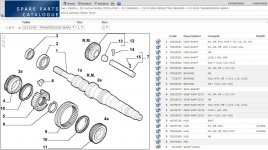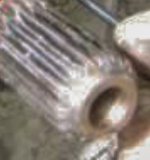We generally did away with spigot bearings when we changed to 'end-on' gearboxes in FWD cars. Not sure if RWD still use them, will depend on the design of the box.
With an in-line engine and gearbox for RWD, the input shaft sits in a big bearing in the front of the gearbox housing, and is then just supported at the flywheel in a spigot bearing, often just a bronze bush, and at the inner end, a needle roller bearing in the mainshaft. This allows the inpit shaft to rotate at different speeds to the mainshaft, which is also the output shaft. This is a 'three-shaft' gearbox, as there is then a layshaft alongside (or below) the input/main to give the different gears.
In transverse gearboxes, we usually get a 'two-shaft' box. The input shaft is supported at both ends within the casing, and the output shaft alongside is similarly supported. With a big bearing at each end, there is no need for a spigot.
I'm not aware of any FIRE engine using a 3-shaft gearbox, so I doubt there has ever been a spigot bearing.
The big question is why the OP thinks he needs one. Is it apparently missing perhaps? Shame the dealer parts guy didn't know about these things. There's more to just being able to look stuff up. Rover group used to do a 'Parts Technical' correspondence course. Still got mine, although it told me nothing new back then (1983) as I'd lived and breathed motor cars since I was born.



